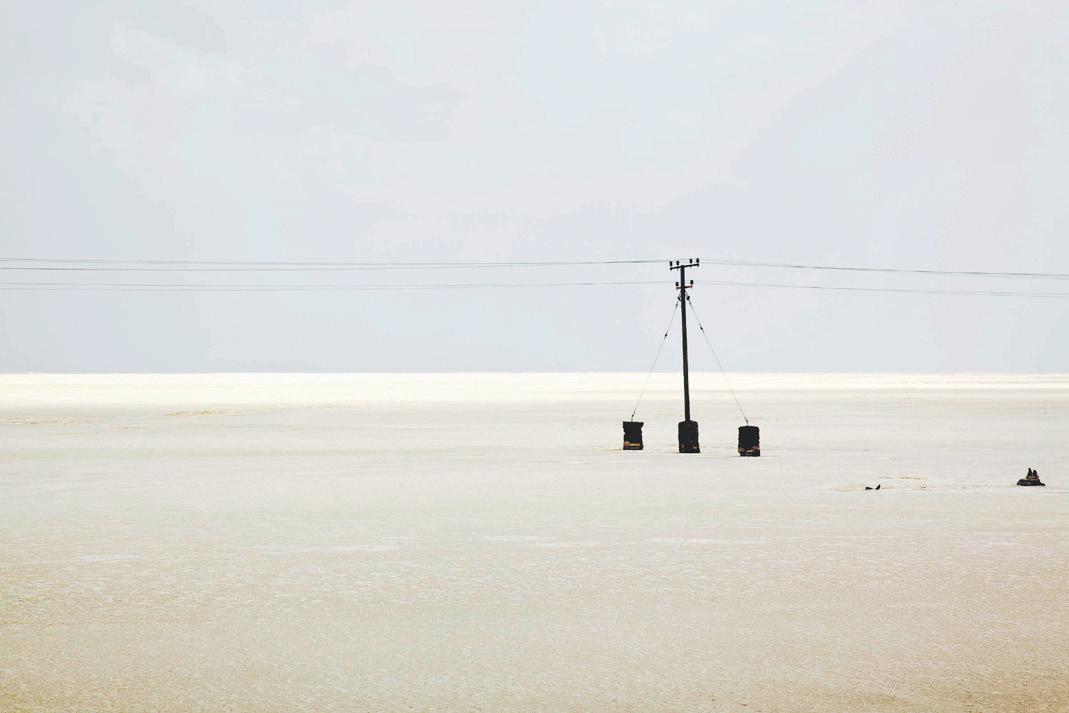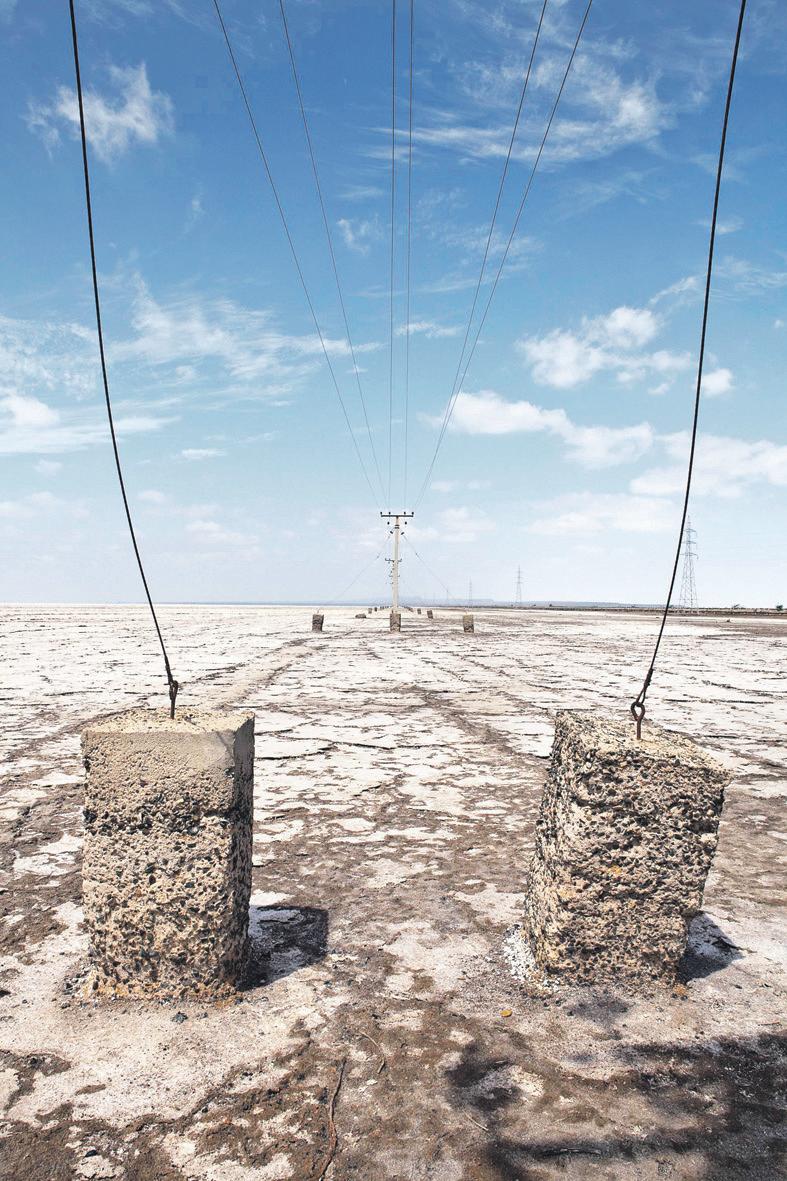
1 minute read
of India’s vast deserts
from 2013-11 Melbourne
by Indian Link
imbuing the photographs with any political tenor. They reflect an introspective search, the passing of time and the power of nature and isolation.
Put simply, in Scaria’s understanding of the world, “you travel best when you put away the map, and embrace the land most completely and find the way only by losing it. This is where the mystery happens”.
Indian curator Ranjit Hoskote poetically describes the visual experience in his essay on the exhibit, as “The crunch of boots on salt-encrusted ground; the cloud mirrored in brackish water; the onrush of wind barely stopped in its track by rock outcrops; the expanse of drought-fissured fields”. Standing amidst Scaria’s images, that is precisely what you feel, captivated in their spatial and aural expanse, lost wandering in their ambiguity, yet connected to their hint of familiar spaces. in his village in Kerala, Scaria was unaware of the scale of India’s cities until he moved to New Delhi to study a Master of Arts at Jamia Millia Islamia in 1995. Unsurprisingly, the sprawling city of New Delhi became the impetus for much of his art that examines pressing issues in contemporary India; extensive development and human dislocation, amid the voracious force of the nation’s rapid urbanisation.
Many of Scaria’s photographs are devoid of people, yet they convey evidence of massive industry, depicted in the cultivation of salt, imagery of power lines and heavy machinery.

Dust is also a testament
Gigi Scaria Land faded, 2013 inkjet print 100 x 150 cm
© Courtesy the artist
Gigi Scaria Dust, 2013 inkjet print 100 x 150 cm
© Courtesy the artist to Scaria’s ongoing relationships with the Ian Potter Museum of Art and with the Australian art industry.
In January 2013 Scaria was a participant in the Australia India Institute artists’ retreat in Jaipur, India. A celebrated contemporary Indian artist, Scaria represented India at the 54th Venice
Biennale in 2011 and has participated in an admirable number of international solo and group exhibitions, and prestigious residency opportunities in India, Germany, America, Hungary, the Republic of Korea and the Republic of Trinidad and Tobago. Projects such as Dust provide critical opportunities for sharing cultural knowledge among a new generation of Indian artists with Australian communities.

Dust is at the Ian Potter Museum of Art, University of Melbourne, from September 18 to February 2, 2014.
Gigi Scaria Systems of support, 2013 inkjet print 100 x 150 cm © Courtesy the artist
Gigi Scaria
Time out (detail), 2013 inkjet print diptych, each 150 x 100 cm © Courtesy the artist
In the exhibition, Scaria examines the relationship between the “social spaces” that millions of people occupy, and the distant landscapes many seek for spiritual fulfilment







